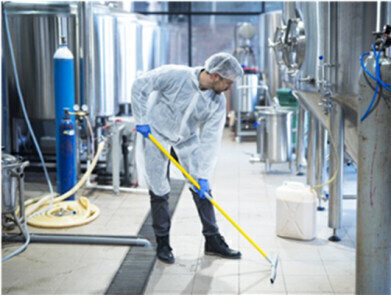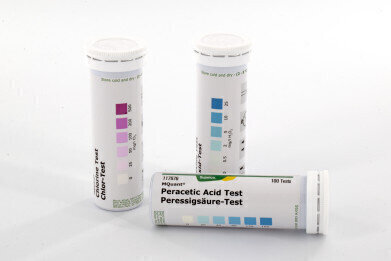-
 消毒控制仍然是确保产品安全的关键。
消毒控制仍然是确保产品安全的关键。 -

Disinfection Control with Supelco® Analytical Products
Sep 27 2021
Do you know how to analyse chemical disinfectant parameters to ensure the safety of your production line after disinfection?
没有有效消毒的设施存在更多安全隐患。消毒控制仍然是确保产品安全的关键。然而,化学洁净度的测定需要仪器和手段,而不仅仅是人的眼睛。
Disinfection is the process of cleaning using compounds that either eliminate bacteria and other disease-causing organisms or reduce them to levels not harmful to health. Disinfection control is a key process in food manufacturing and is comprised of several steps: ensuring the correct concentrations of disinfecting reagents are used, checking that disinfection has been completed sufficiently and testing that it was accomplished without leaving contaminating residues. Disinfection control makes use of the chemical reactions caused by disinfectants to determine their absence or presence, or more precisely their concentration.
It is important to note that, in contrast, hygiene monitoring is a related and sometimes overlapping process that it is generally preventative. Hygiene monitoring also involves ensuring that cleaning procedures have been implemented adequately and that no contaminating residues remain, but additionally can involve allergen monitoring and prevention of microbial growth.
Both of these processes are critical in the food and beverage industry where preventing food-borne illnesses is a key objective in maintaining safe manufacturing. Here, we focus on disinfection control and how to navigate the numerous options in its methods and instrumentation.
Considerations in Choosing Disinfectants
One of the primary concerns in selecting a disinfectant is to maintain the quality of the final manufactured product. As such, a disinfectant in the food and beverage industry must not be toxic or leave toxic residues. It should also be fast-acting in order to minimise disruption to the manufacturing process. Additionally, it should not leave any odour or taste residue that could affect the end product. In order to facilitate the removal of any residues, it is for instance helpful if a disinfectant has good solubility so that it may be rinsed away after disinfection is complete.
The compatibility of the disinfectant with the equipment and methods used in manufacturing is also important. For example, it should work well on the type/material of the surface being disinfected without damaging the equipment. It should also be compatible in terms of other physical factors such as temperature and pH, remaining effective under the conditions it is used in.
最后,给定消毒剂的消毒控制方法也会影响消毒剂的选择。
Thorough disinfection control testing of filling and processing equipment must be conducted to ensure that no disinfectant residues remain and subsequently contaminate the final food or beverage products. Ensure the safety of your production line after disinfection.
Listen to the webinarto learn the importance of Disinfection control of your production sites.
More informationonline
Events
ACS National Meeting & Expo, Fall 2022
Aug 21 2022Chicago, IL, USA & Online
Aug 22 2022Frankfurt, Germany
Aug 27 2022Maastricht, Netherlands
Aug 28 2022Lisbon, Portugal
Aug 31 2022Singapore




















